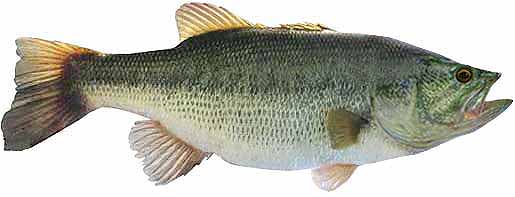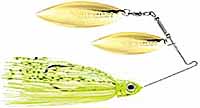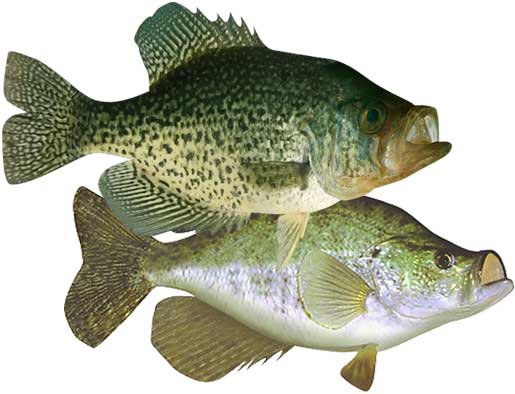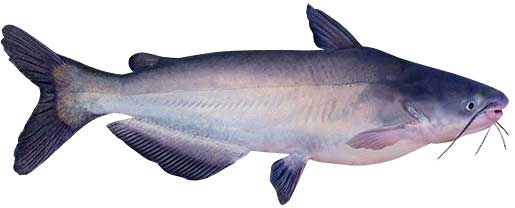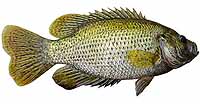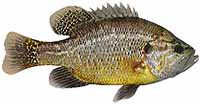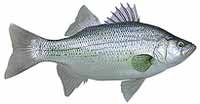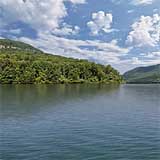Fishing Report For Nickajack Lake, TN
By Rick Seaman
July 25, 2025
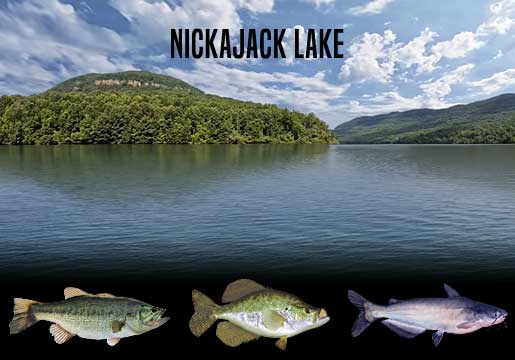
Fishing Reports
Popular Fish Species Nickajack Lake, TN
Largemouth Bass
Current Report: Good To Very Good
SUMMER. The current water temperature in Nickajack Lake is in the mid to high 70's. Bass are feeding shallow early and late in the day, where they are being caught on topwater, crankbaits and swimbaits. Ned rigs and wacky-rigged stick worms are catching finicky bass when the bite is slow. Largemouth bass here feed on gizzard shad, threadfin shad, small sunfish and crawfish. During the hotter parts of the day, they are being caught on points, channel edges, and ledges 15 to 25 feet deep. The best reports seem to be from anglers fishing around the Nickajack Dam area,Rankin Cove, rip-rap, grassy shorelines and submerged structure
FALL. As Fall arrives, bass here will follow sunfish, and schools of baitfish, into coves and shallow bays, where spoons, swimbaits, and slow-rolled spinnerbaits have been successful in recent years.
WINTER. Winter will isolate them around slightly deeper structure, flats, points and creek channels. They can be found from 20 to 35 feet deep. Here they hold, feeding less frequently, awaiting warmer water to return in Spring.
SPRING. Once water temperatures rise into the low 60's, largemouth will move from deep wintering spots to shallower water, just outside spawning areas. Jerkbaits, spinnerbaits and vibrating jigs typically get bites just away from the bank. At this time they are starting to get focused on the spawn. Once water warms into the mid to high 60's, they will move into 1 to 4 feet of water, and create nests, then lay eggs. Immediately afterwards, females move to deeper water and males remain to guard the eggs, and then the fry. After a couple weeks, the males also move to slightly deeper water. Crankbaits, vibrating jigs, plastic worms and swimbaits are historically catching bass during this period.
Black & White Crappie
Current Report: Very Good
Both black crappie and white crappie reside here with white crappie slightly more dominant species. Locals report the lock side of the Chickamauga dam, Bennett Lake, Marion Park, Browns Lake, Mullens Cove, and bridge pilings, have all been consistent producers, for many years.
SUMMER. Water temperatures are currently in the mid to high 70's, and crappie fishing has been very good. Now that the spawn is over, and the hot Summer sun is warming the shallows, crappie have retreated to depths of 12 to 20 feet, or embedded in the shade of heavy vegetation. This is a good time to focus around bridge pilings. Anglers are also locating schools of crappie hanging over deep timber, around concrete pilings, above rocky structures and around creek channel edges.
FALL. Baitfish, which are moving into shallow flats, coves and bays, are drawing crappie into these areas, where they are feeding heavily in preparation for the cold Winter. Small spoons are a good option during this feeding marathon.
WINTER. Once the shallows start cooling rapidly, crappie will migrate to deeper holding areas, mostly off shore. At this time they are typically caught using a very slow presentation, in 20 to 35 feet of water. Even though they are typically not on the bottom, they are relating to some cover, or structure change, directly below them.
SPRING. In early Spring, crappie begin staging in 8 to 12 feet of water, just outside spawning bays and shallow flats. Spring is prime time to be on the water, as crappie have moved shallow to spawn. At that time, they are typically caught in 2 to 4 feet of water. Docks, brush, wood and vegetation are where most anglers are catching good numbers using small crappie jigs or live minnows. After the spawn, crappie move outside the spawning area and hold on the closest cover. Once they move off the beds, anglers are reporting good success using fish finders and forward facing sonar to locate schools of crappie, which tend to stack vertically around cover. Light tackle with 4 lb to 8 lb line is a popular choice.
Blue Catfish

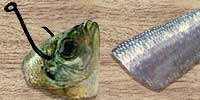
Current Report: Good To Very Good
SUMMER. Early Summer is post-spawn season for big blue catfish. They follow big schools of baitfish, and feed heartily. Live shad is the preferred bait at night, while cut bait is catching nice blues during the day. Stay around channel edges and fish areas that have concentrations of bait. Once Summer weather has warmed lake water above the 70's, blue catfish move closer to the main lake, to deeper feeding areas, still preferring to remain in current when available. Blues, including some of the bigger ones, are now being caught while slow trolling, or drifting ledges, adjacent to river channels, or within the channel along the edges. The lake record here is over 100 pounds, and big blues, 25 to 70 pounds, are regularly caught. Anglers fishing from the bank are catching a few fish, but boats are the preferred approach. Late Summer, if the water temperature rises above the high 70's, they become less active, and fishing can slow down.
FALL. Fall begins the aggressive feeding in preparation for winter. Blues at this time are being caught in deep holes, in and around the channel, often toward the river end again.
WINTER. In Winter, focus on deep holes, in 30 to 40 feet deep, where blue catfish wait through the cold water season. They are less aggressive now, but slow drifting, or dead sticking baits, can still trigger bites. Cut bait, or live shad are the top bait choices. Use slip sinkers, 3-way rigs, or Carolina rigs with enough weight to keep the bait bumping bottom as you drift or slow troll.
SPRING. When water temperatures rise into the mid 40's, blue cats start their Spring migration up river. They hold, and feed aggressively, around shallow spawning areas until water warms into the mid 60's, at which time they will spawn. After which they feed in the river end very aggressively.
Fishing Video
Fish species to fish for...
Guide to fishing for largemouth bass, smallmouth bass, spotted bass, channel catfish, flathead catfish, black crappie, white crappie, walleye, bluegill, redear sunfish, rock bass, warmouth, white bass, yellow bass, striped bass, hybrid striped bass, paddlefish and sauger at Nickajack Reservoir in Tennessee.
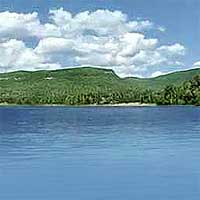
Nickajack Lake is a 10,370-acre reservoir with nearly 180 miles of shoreline. Bass, crappie, striped bass, catfish, walleye, sunfish, paddlefish, and other species reside in Nickajack Reservoir in healthy numbers. There are plenty of places to fish from the bank.
Primary fish species to catch
Click images for fishing tips and details about each species.
Today's Weather & Forecast
Fishing Boat Rentals
Click here for fishing boat rentals.
Marinas
Click here for marinas.
Public Boat Launch Ramps & Landings
Click here for boat ramps.
Fishing License
Click here for a Tennessee Fishing License.
Map - Fishing & Access
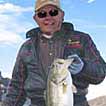
Rick Seaman is a fishing enthusiast with over five decades of fishing experience, a retired tournament fisherman, author of numerous published articles on fishing, and co-author of the book "Bass Fishing - It's not WHAT you throw, It's WHERE you throw it".
Contact Information
Nickajack Reservoir
Hales Bar Marina & Resort
1265 Hales Bar Rd
Guild, TN 37340
423 942-9000
Fishing lakes in each state
072525
Nickajack Lake, Tennessee Report
TENNESSEE


Largemouth bass, smallmouth bass and spotted bass fishing in southeast TN.


